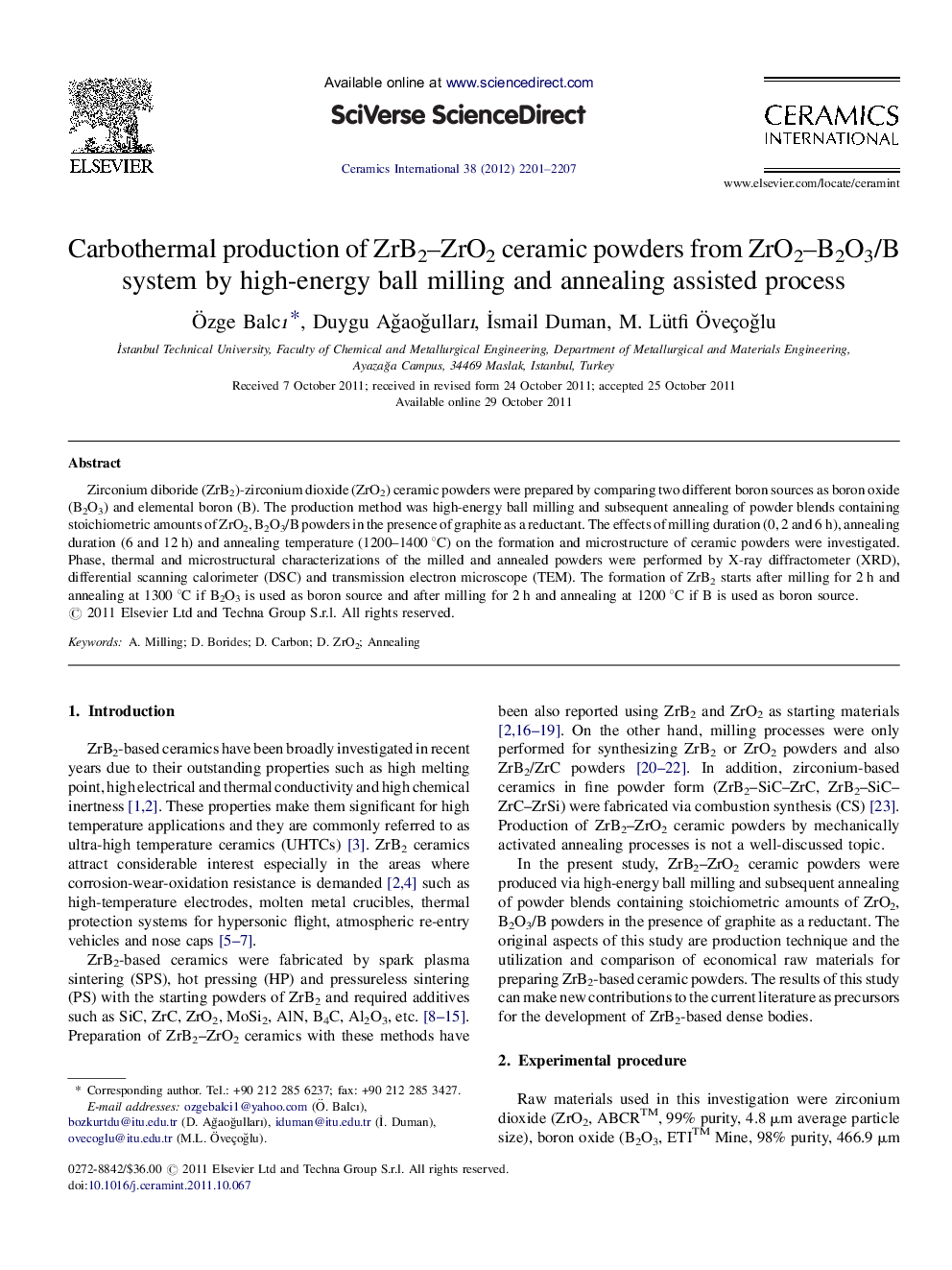| Article ID | Journal | Published Year | Pages | File Type |
|---|---|---|---|---|
| 1464232 | Ceramics International | 2012 | 7 Pages |
Zirconium diboride (ZrB2)-zirconium dioxide (ZrO2) ceramic powders were prepared by comparing two different boron sources as boron oxide (B2O3) and elemental boron (B). The production method was high-energy ball milling and subsequent annealing of powder blends containing stoichiometric amounts of ZrO2, B2O3/B powders in the presence of graphite as a reductant. The effects of milling duration (0, 2 and 6 h), annealing duration (6 and 12 h) and annealing temperature (1200–1400 °C) on the formation and microstructure of ceramic powders were investigated. Phase, thermal and microstructural characterizations of the milled and annealed powders were performed by X-ray diffractometer (XRD), differential scanning calorimeter (DSC) and transmission electron microscope (TEM). The formation of ZrB2 starts after milling for 2 h and annealing at 1300 °C if B2O3 is used as boron source and after milling for 2 h and annealing at 1200 °C if B is used as boron source.
